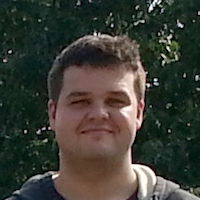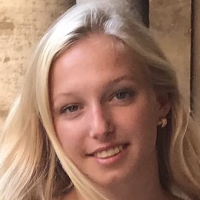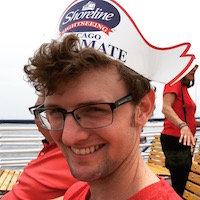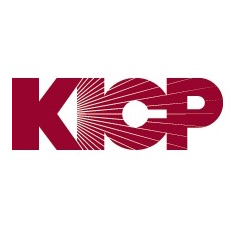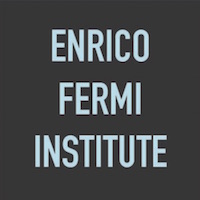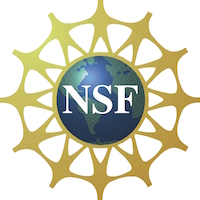XENON1T/nT
The XENON1T two-phase xenon Time Projection Chamber (TPC) was operating at Laboratori Nazionali del Gran Sasso (LNGS) from 2016 till end of 2018 and opened the era of multi-ton noble liquid detectors for Dark Matter seraches. Thanks to its design, large fiducial mass (1 tonne fiducial), and ultra-low background, XENON1T set world-leading results on a variety of dark matter models and rare searches.
The UChicago group activities within the XENON1T program spanned from the preparation and assembly of the two-phase Time Projection Chamber, its commissioning and the development of the computing cyber-infrastructure for data-processing/analysis - hosted by the UChicago Research Computing Center. The group is strongly geared towards data analyses and Monte Carlo simulations, with group members serving as Analysis and Monte Carlo Coordinators and deeply involved in several major analyses.
With the XENON program moving to its next phase, XENONnT, the UChicago group took the lead in the design and construction of XENONnT TPC and led the installation at LNGS in early 2020. Now rthe group is contributing to early operations and commissioning. In parallel to this activity, the group upgraded the cyber-infrastructure to accommodate XENONnT needs and continue to contribute to the data analysis.
"Observation of Excess Electronic Recoil Events in XENON1T", E. Aprile et al. (XENON Collaboration), arXiv:2006.09721, Submitted to Phys. Rev. D (2020)
"A Search for Light Dark Matter Interactions Enhanced by the Migdal effect or Bremsstrahlung in XENON1T", E. Aprile et al. (XENON Collaboration), arXiv:1907.12771, Phys. Rev. Lett. (2019)
"Light Dark Matter Search with Ionization Signals in XENON1T", E. Aprile et al. (XENON Collaboration), arXiv:1907.11485, Submitted for publication to Phys. Rev. Lett. (2019)
"XENON1T Dark Matter Data Analysis: Signal Reconstruction, Calibration and Event Selection", E. Aprile et al. (XENON Collaboration), arXiv:1906.04717, Accepetd for publication on Phys. Rev. D (2019)
"XENON1T Dark Matter Data Analysis: Signal & Background Models, and Statistical Inference", E. Aprile et al. (XENON Collaboration), arXiv:1902.11297, Phys. Rev. D 99, 112009 (2019)
"The XENON1T data acquisition system", E. Aprile et al. (XENON Collaboration), arXiv:1906.00819, JINST 14, no.07, P07016 (2019)
"First detection of two neutrino double electron capture in 124Xe - the longest half-life ever observed directly", E. Aprile et al. (XENON Collaboration), arXiv:1902.11002, Nature 568, 532–535 (2019)
"Constraining the spin-dependent WIMP-nucleon cross sections with XENON1T", E. Aprile et al. (XENON Collaboration), arXiv:1902.03234, Phys. Rev. Lett. 122, 141301 (2019)
"First results on the scalar WIMP-pion coupling, using the XENON1T experiment", E. Aprile et al. (XENON Collaboration), arXiv:1811.12482, Phys. Rev. Lett. 122, 071301 (2019)
"Dark Matter Search Results from a One Ton-Year Exposure of XENON1T", E. Aprile et al. (XENON Collaboration), Phys. Rev. Lett. 121, 111302.
"First Dark Matter Search Results from the XENON1T Experiment", E. Aprile et al. (XENON Collaboration), Phys. Rev. Lett. 119, 181301.
"The XENON1T Dark Matter Experiment", E.Aprile et al. (XENON Collaboration), Eur. Phys. J. C (2017) 77: 881.
"Material radioassay and selection for the XENON1T dark matter experiment", E.Aprile et al., submitted to Eur. Phys. J. C (2017)
"Removing krypton from xenon by cryogenic distillation to the ppq level", E.Aprile et al., Eur. Phys. J. C (2017) 77: 275.
"Online 222Rn removal by cryogenic distillation in the XENON100 experiment", E.Aprile et al., Eur.Phys.J. C77 (2017) 77: 358.
"Results from a Calibration of XENON100 Using a Source of Dissolved Radon-220", E.Aprile et al., Phys. Rev. D 95, 072008 (2017)
UChicago Noble Liquids R&D
Our research, focused on the development and operation of the dark matter detectors, is complemented by R&D activities and auxiliary measurements, designed to test new ideas for next generation detectors as well as inform analyses of presently running dark matter searches. This is accomplished by means of small experimental setups operated in our lab or on neutron beam facilities like ISNAP at Notre Dame University and TUNL at Duke University.
"Model Independent Approach to the Single Photoelectron Calibration of Photomultiplier Tubes", R.Saldanha et al., Nucl.Instrum.Meth. A863 (2017) 35-46.
"Measurement of scintillation and ionization yield and scintillation pulse shape from nuclear recoils in liquid argon", H.Cao et al., Phys.Rev. D91 (2015) 092007
"Observation of the dependence on drift field of scintillation from nuclear recoils in liquid argon", T.Alexander et al., Phys.Rev. D88 (2013) 9, 092006
DARKSIDE-50 (our past...)
We contributed to the design, operation and data analysis of the DarkSide-50 detector since its inception. DarkSide-50 is a two-phase argon Time Projection Chamber (TPC). The detector, filled with special low-radioactivity argon extracted from ancient underground gas-reservoir, has operated at LNGS since October 2013, setting strong foundations for the potential exploitation of the technique in future, large multi-ton detectors.
Phys.Rev. D93 (2016) 081101
JINST 11 (2016) P03016
Phys.Lett. B743 (2015) 456-466
Astropart.Phys. 49 (2013) 44-51
JINST 5 (2010) P05003
Nucl.Instrum.Meth. A587 (2008) 46-51
Astropart.Phys. 28 (2008) 495-507
Nucl.Instrum.Meth. A574 (2007) 83-88





































